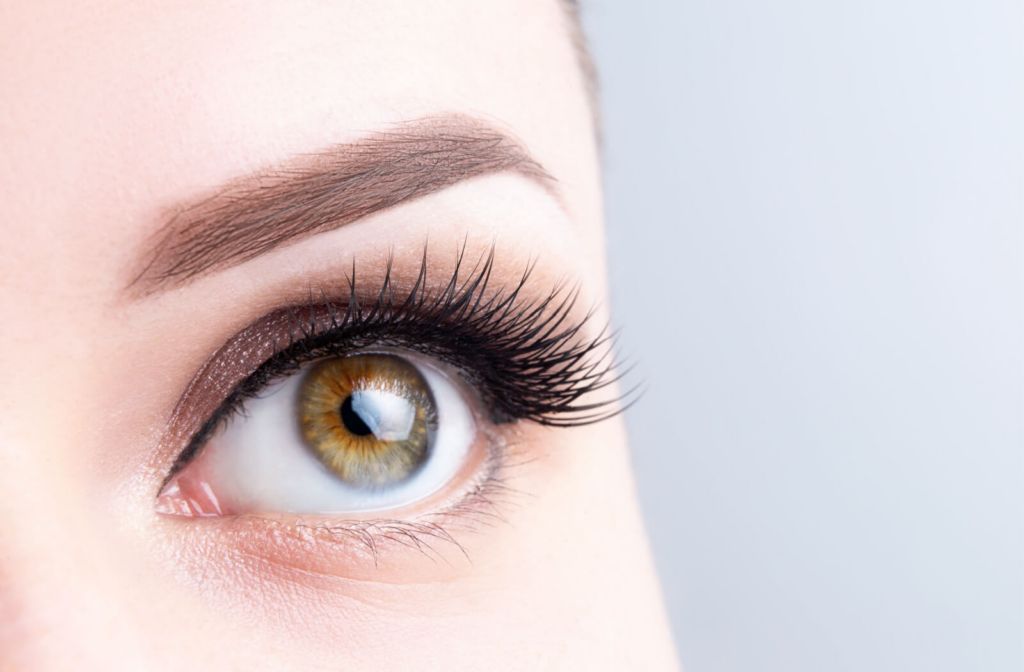Eyelash extensions can be a great way to enhance the natural beauty of your eyes and create a dramatic look that can last for weeks. However, they can cause possible complications in some people putting their eye health at risk.
One such complication is blepharitis—a condition that causes inflammation of the eyelids.
Eyelash extensions can cause blepharitis from an allergic reaction to the glue or adhesive attached to the eyelashes.
Caring for your eyes and eyelashes properly can help avoid any potential complications. If you have redness, irritation, or swollen eyelids with eyelash extensions, visit your eye doctor for an eye exam to assess your condition.
What Is Blepharitis?
Blepharitis is a common condition that causes inflammation of the eyelids. It usually affects the edge of the eyelids and both eyes.
While blepharitis is not usually serious and doesn’t cause permanent damage to your eyesight, it can be uncomfortable and unsightly. Symptoms of blepharitis can include:
- Redness
- Irritation
- Burning or stinging
- Greasy eyelids
- Itchy eyelids
- Swollen eyelids
- Dry eyes
- Flaking of the skin around the eyes
- Crusted eyelashes
- Eyelid sticking
- Frequent blinking
- Light sensitivity
In severe cases of blepharitis, it can cause the following:
- Blurriness
- Eyelashes falling out
- Eyelashes growing in the wrong direction
- Cornea swelling
Causes of Blepharitis
Blepharitis can result from various factors. The exact cause of blepharitis isn’t clear, but it can be associated with one or more of the following:
- Dandruff of the scalp and eyebrows
- Bacterial infection
- Clogged or malfunctioning meibomian glands in your eyelids
- Rosacea
- Allergies, including allergic reactions to eye medications, contact lens solutions, or eye makeup
- Eyelash mites or lice
- Dry eyes
Eyelash Extensions & Blepharitis
Eyelash extensions adhere to the natural lashes with a bonding agent or glue. Researchers don’t know exactly why eyelash extensions increase your risk of developing blepharitis, but there are some possible reasons.
We all have some amount of bacteria around our eyes. However, the number of bacteria can increase, from contact lens solution, mascara, or eyelash extensions. Eyelash extensions can sometimes trap dirt, debris, or bacteria between them and your natural lashes, leading to irritation and infection.
Allergic blepharitis can result from eyelash extensions. Some people can have an allergic reaction to the glue or tape that adheres to the lashes. Lash glue can contain latex, ammonia, and formaldehyde. The weight and structure of the eyelash extensions can cause also irritation.
You might not develop full blepharitis, but 73% of people can experience some side effects or allergic reactions from eyelash extensions, such as:
- Itching
- Redness
- Pain
- Swelling
- Eyelid heaviness
The allergic reaction can happen during the application, after several hours, or within a few days. Symptoms can last from a few hours to a few days, depending on the severity of the reactions and treatment.

Treatment for Blepharitis
Blepharitis treatment typically involves a combination of self-care measures and medication. If these don’t help resolve or manage symptoms, your eye doctor may suggest prescription treatments. Here are some self-care measures:
- Wash your eyelids regularly with soap, water, and clean hands.
- Keep your eyelids clean and free of crusts. You can use a mild cleanser and a clean, damp cloth applied to the eyes for a few minutes to loosen crusts and open up oil glands. Rinse the eyes with clean water after.
- Manage dry eyes and discomfort with over-the-counter artificial tears.
If symptoms don’t resolve in a few days with self-care measures, your eye doctor may prescribe the following:
- Antibiotics if caused by a bacterial infection.
- Steroid eye drops to help ease symptoms.
If you suspect you have blepharitis, see your eye doctor for an accurate diagnosis and appropriate treatment.
How to Prevent Blepharitis
You can’t always prevent blepharitis with eyelash extensions. However, there are several steps you can take to minimize the risk of developing blepharitis or other eye-related complications from eyelash extensions. These can include:
- Choosing a reputable, licensed, and trained professional to get eyelash extensions.
- Practicing good hygiene. Wash your face regularly and avoid touching your eyes with unclean hands.
- Properly cleaning your eyelash extensions.
- Avoiding using triggers or use them sparingly. These include mascara, makeup, contact lens solution, and eyelash extensions. Replace mascara every 3 months and use fresh contact lens solution every time.
Understanding Blepharitis for Healthy Eyes
While eyelash extensions can enhance your beauty, they can also increase the risk of blepharitis. It’s always better to err on the side of caution and visit your eye doctor if you experience symptoms of blepharitis. Book an appointment with Dr. Bishop & Associates to help keep your eyes and vision healthy.




